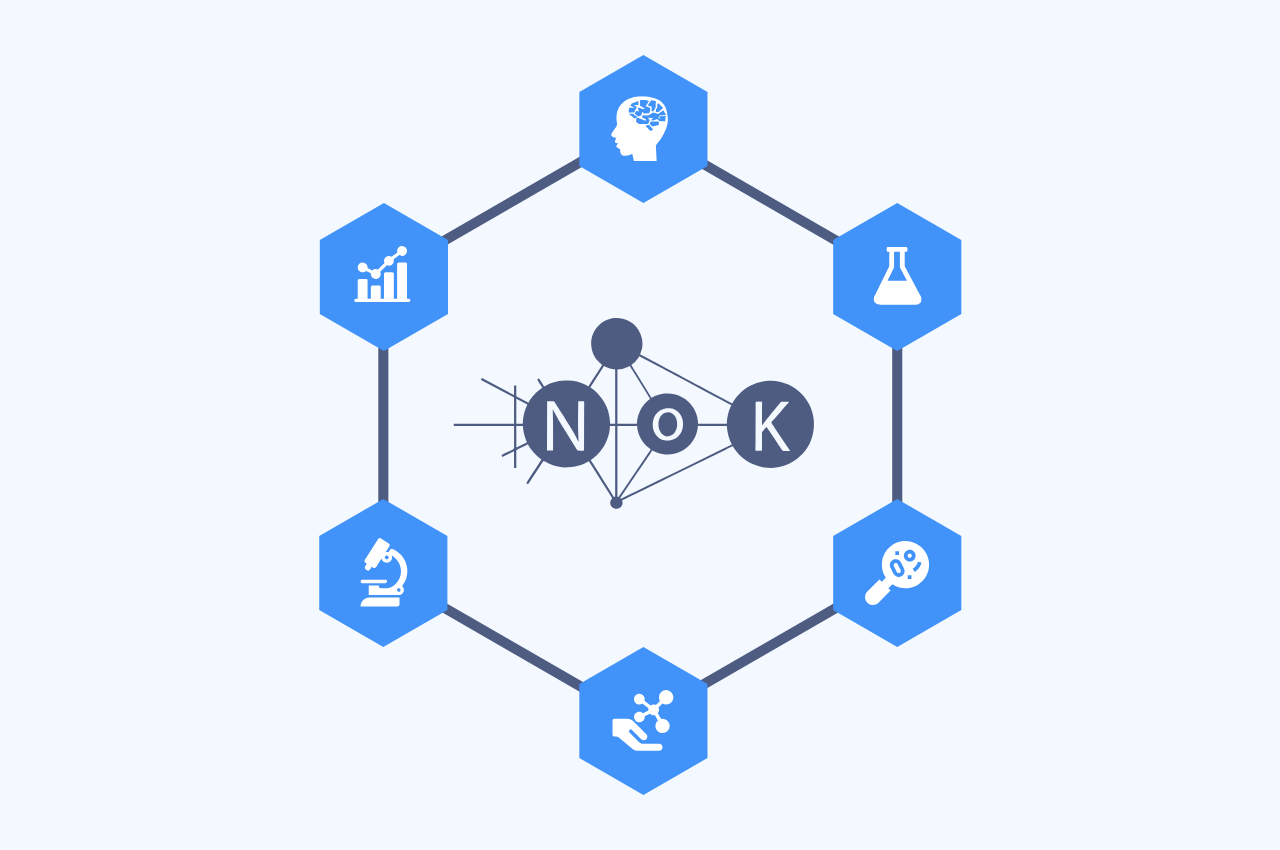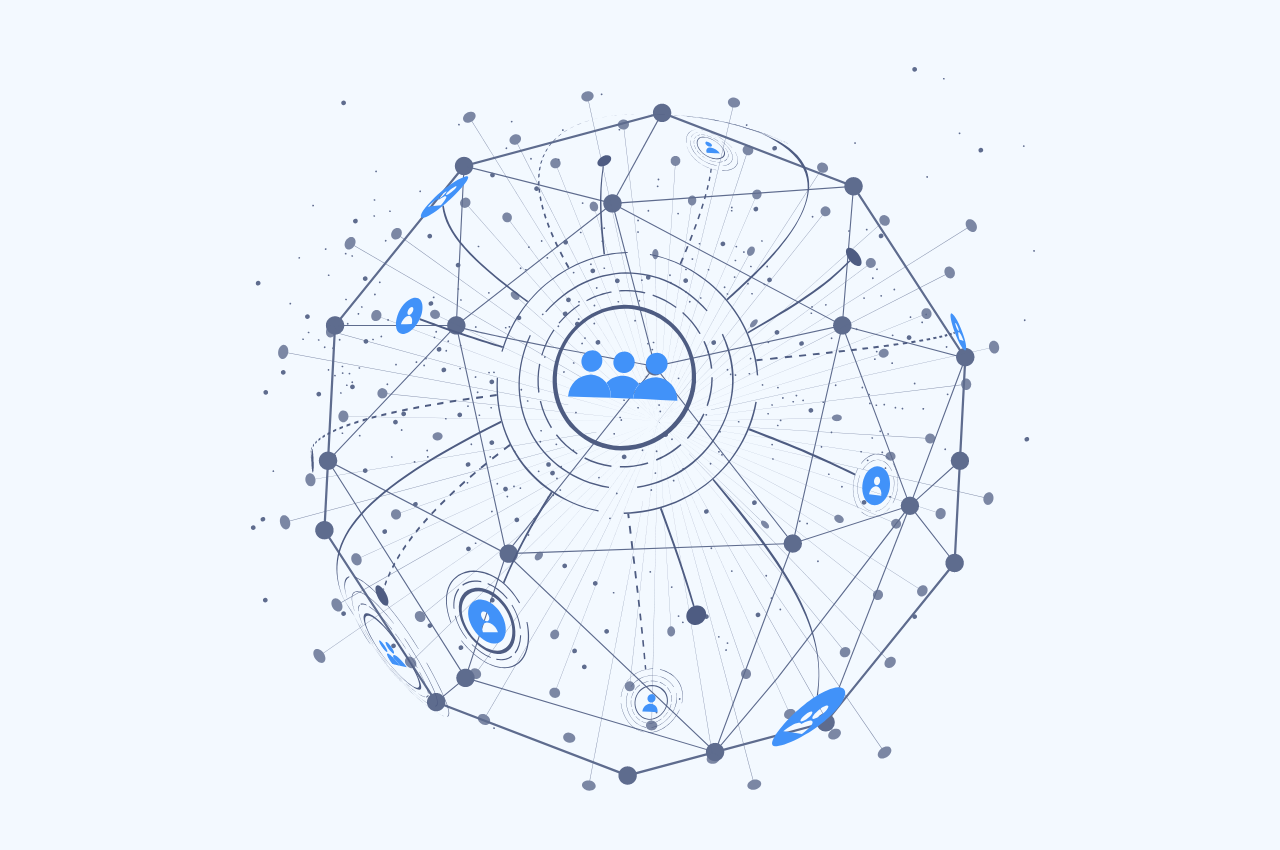Users
General User/Contributor
The most prevalent type of user in the NoK is someone who contributes knowledge and participates in the peer review process – typically an academic, researcher or lab technician. In addition, other users and contributors could be corporate or government researchers, social workers, think-tanks, etc.
Peer Administrator
A person or organization (e.g. corporation, university, etc.) running a NoK peer (i.e. physical node on the p2p network). They are the equivalent of “miners” in the NoK, since they contribute the computing power necessary to keep the network alive (and are compensated for it).
Client/Beneficiary
Someone who wants to benefit from the contributed knowledge in the NoK by purchasing a non-exclusive license for intellectual property within the network. Example clients/beneficiaries are corporations, pharmaceutical companies, entrepreneurs etc.
about

Chains of Discovery
The Network of Knowledge (NoK) is a collaborative platform for scientific discovery. We envisage the world where valid and valuable contribution to scientific progress can be made by anyone from anywhere. If someone has a contribution (an observation, experimental data, hypothesis, etc.) they put it on the platform and everyone else is free to build on top of it.
Eventually, the path of discovery arrives at a major breakthrough at which an external transaction can be made - via charitable funding, technology licencing or other methods. The value of this external transaction is deposited at the point of the major breakthrough, then it trickles down the chain of discovery.

Open Secrets
In a typical research environment, the progress and data are hidden from the competitors until a major breakthrough. In this system there is no longer a need for secrecy as every link in the chain of discovery shares value from the major breakthrough that is built on top of that chain. Competition is no longer for the major breakthrough it is for any position in the chain. Any position in the chain of discovery is desirable.
The platform is designed as a decentralized peer-to-peer network, where a single peer provides access to the entire state and functionality available in the system.
Problems / Solutions
Decentralization
One of the main objectives of the NoK is to democratize research by decentralizing, anonymizing and randomizing data validation and peer review. Additionally, the Network aims to build a market-driven system of economic incentives and enable live connections between data and research.
Knowledge Graph
The NoK organizes all of the knowledge contained within it in the so-called Knowledge Graph, which allows contributors to easily add/explore connections between different data points, even across different scientific domains. Additionally, the NoK allows users to define custom layers of connectivity (i.e. topologies) on top.
Anonymization
By completely anonymizing all of its participants and utilizing a random, anonymous peer review process, the Network of Knowledge is able to ensure that scientific output is reviewed and judged based solely on its merit and applications, rather than the credentials of the author(s).
Value Distribution
The NoK Value Distribution Protocol ensures that whenever a piece of research receives funding, wealth is fairly propagated to everyone who has contributed in any way to it. The smart-contract enforced VDP is entirely based on a knowledge node’s connections with other such nodes, as well as its utilization by users.
Barriers to entry
The leading academic journals have disproportionate power over published research, effectively creating an oligopolistic market where just a few players dictate the workflow of the entire field. As a result, researchers are forced to publish their work under severly disadvantegous terms, often even economically so.
Lack of interconnectedness
Due to the ever-increasing mass of research artefacts, there currently are very few easy/efficient ways to explore connections between different pieces of knowledge. Moreover, it is even harder to model relationships/dependencies between research from different domains of science.
Reputational Biases
In the current system, how well a scientific work is received depends not only on its merit but on the reputation of its author(s) as well. As a result, potential flaws and shortcomings in scientific works by prominent authors can often be deliberately overlooked by peer reviewers.
Misaligned Incentives
The commercial and academic objectives of researchers often contradict each other, because of the industry's often misplaced focus on pushing out new content, without much regard for its quality. As a result, findings are often exaggerated and developments overly sensatinalized.
Our team

Roman Gonitel
Founder & CEO
Spent 18+ years at the top UK institutions as an academic researcher in the fields of cell molecular biology, neuroscience, molecular genetics, regeneration, imaging, nanoparticle delivery and more.

Alexander Kolev
CTO
16+ years of R&D experience, out of which 7+ in management role. 10+ years in a corporate environment (Microsoft and VMware), most recently as Senior Manager, R&D at VMware.

Angel Kelchev
Head of Business Development
12+ years of M&A and business development experience both in the US (Union Square Advisors, Lehman Brothers, Morgan Stanley) and in Bulgaria (Endeavor, Ernst & Young, Entrea Capital).

Vasil rabuhchiev
CFO
5+ years of Capital Markets experience at bulge bracket (Bank of America Merrill Lynch), specialized (ICBC Standard) and buy-side (Rothesay Life) financial firms, primarily in the UK.

Teodor Savov
Project Manager
3+ years of experience as a tech lead/project manager. Oversaw and ensured the succesful delivery of software projects in domains such as healthcare, fintech, retail, blockchain and others.

Svetlin Panov
Tech lead
10+ year experience in various IT domains including infrastructure (server hardware, software and virtualization), 4+ of which years of experience as a software engineer and 3+ as business analyst.
Screenshots




